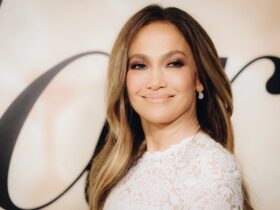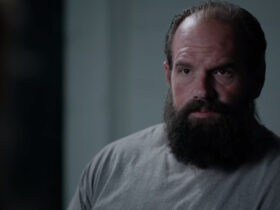There’s a certain elegance that accompanies a well-done taper fade haircut. Universally flattering and ever-trendy, this hairstyle has been a staple in men’s fashion for decades. With evolving styles and modern twists to this classic, the taper fade remains an enduring icon in men’s grooming. With 2023 just around the corner, the latest renditions of the taper fade are even more stylish, offering a blend of traditional aesthetics with contemporary elements. As we dive into the world of taper fades, you’ll discover its origins, its appeal, and the best versions you should consider this coming year.
The Basics: What is a Taper Fade?
A taper fade haircut is characterized by the gradual thinning of the hair around the back and sides of the head, seamlessly transitioning from longer hair at the top to very short or shaved hair at the bottom near the neck. The ‘fade’ aspect implies that the hair decreases in length in a smooth manner, while ‘taper’ suggests that there’s a subtle transition rather than an abrupt change. This balance between subtle transitions and distinct fades is what lends this haircut its unique charm.
Historical Origins: The Taper Fade’s Place in Time
Although taper fades have witnessed soaring popularity in recent decades, their origins can be traced back to the military hairstyles of the 40s and 50s. Soldiers required easy-to-maintain, clean, and functional hairstyles that wouldn’t impede their performance, which naturally led to the birth of short, faded haircuts. With time, these styles permeated civilian life, evolving and adapting to the fashion sensibilities of each era. By the 1980s and 1990s, taper fades had become a cornerstone of urban style, especially within the hip-hop community. Today, it’s not just a relic of the past but a vibrant hairstyle with multiple variations to suit every face shape and personality.
The Modern Twist: 2023’s Most Trending Taper Fades
With a new year comes fresh, stylish takes on timeless classics. Here are the top taper fade versions to look out for in 2023:
- The High Taper Fade: This version starts the fade higher up on the head, making it more noticeable and bolder. It pairs well with a variety of top hairstyles, from pompadours to textured crops.
- The Low Taper Fade: Ideal for those looking for subtlety, the low taper fade starts further down, close to the ears, offering a more understated appearance.
- The Mid Taper Fade: Striking the perfect balance, the mid taper fade is neither too high nor too low. It’s versatile, complementing both formal and casual looks.
- The Skin Taper Fade: Also known as the bald fade, this style transitions from hair to exposed skin, giving a sharp, edgy appearance.
Styling and Maintenance: Keeping the Perfect Taper Fade
Like any hairstyle, a taper fade requires consistent upkeep to maintain its sharp appearance. Regular trims, every 2-4 weeks, are essential to keep the fade looking fresh. Furthermore, depending on the length and style of the hair on top, you might require hair products like pomades, gels, or matte pastes. While styling, it’s crucial to remember that less is more. A small amount of product can go a long way in providing hold and texture without making the hair look greasy.
Understanding the Tools: A Barber’s Arsenal for the Perfect Fade
To craft a seamless taper fade, barbers rely on a set of specialized tools. Clippers, with varying guard sizes, are paramount. They allow for precise trimming and grading of hair lengths. Shears or scissors can refine edges, while razors give that ultra-close shave, especially for skin fades. With the right tools in adept hands, the taper fade’s gradation is sculpted to perfection.
Face Shape Matters: Picking Your Fade
Every face shape has a complementary fade. Oval faces, deemed versatile, can rock most fade styles. Square faces benefit from softer fades to counteract sharp jawlines. Round faces can utilize higher fades to elongate appearance. Identifying your face shape is the first step to picking the perfect fade.
The Versatility: Adapting Taper Fades for Different Hair Types
Taper fades aren’t exclusive to straight hair. Curly, wavy, or coiled hair can adopt and adapt this style. With curly hair, fades can accentuate the curls on top. Wavy hair can leverage the texture for a unique look. Coiled hair, typical of Afro-textured hair, can create striking high-top fades.
Beyond the Basics: Advanced Fade Techniques
The world of fades is vast, with techniques like drop fades, where the fade descends behind the ear, creating a unique arc. Then there’s the burst fade, which radiates around the ear, pairing brilliantly with mohawks. Mastery of these techniques propels a simple fade to artistry.
Cultural Significance: The Fade’s Place in Pop Culture
From the streets to the big screen, taper fades have made their mark. Icons in music, sports, and film have sported this style, solidifying its place in pop culture. It’s not just a haircut; it’s a statement, an identity, a nod to a shared cultural experience.
Personalization: Adding Unique Touches to Your Fade
While the taper fade is a defined style, there’s room for creativity. Some incorporate hard parts or designs, etched with precision. Others blend in beard styles for a cohesive look from head to chin. The canvas of a fade is open to artistic interpretation, making each one distinct.
Conclusion: The Evergreen Charm of Taper Fades
As we stand on the brink of 2023, it’s evident that the taper fade, with its rich history and ability to evolve, will continue to dominate the world of men’s hairstyles. Whether you’re seeking a bold statement or an understated look, there’s a taper fade for everyone. Its versatility, coupled with its timeless allure, ensures that this haircut will remain a favorite for many more years to come. So, if you’re thinking about changing up your hairstyle or just refreshing your current look, consider one of the stylish taper fades highlighted here. They’re not just haircuts; they’re a testament to the ever-evolving world of fashion and style.
































